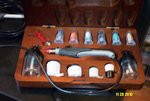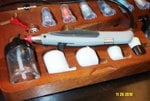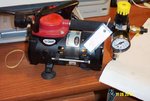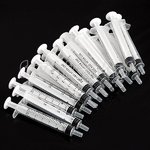prem895
Staff Sergeant
I just ordered one of these in the hope it will perform better than my cheap Chinese made dual action ones. It may just be me,and maybe I don't thin my enamel enough,because it seems to spray fine one second and then no paint or very little. I stop and it does the some thing.Could it be the cheap $1 0.2 and 0.3 offshore needles or is it you only get cheap results from cheap guns. I don't know the answer. My question is,is for you guys who use this brush. Have I made the right move buying this or am I just doing something wrong with the cheapo one.BTW I use MM or Hu enamel thinned with lacquer thinner. Any advice. I have 6 or 7 models ready for paint,but I am scared that the cheapo one will sputter and ruin something I spent so much time to get ready for paint HELP ME!






